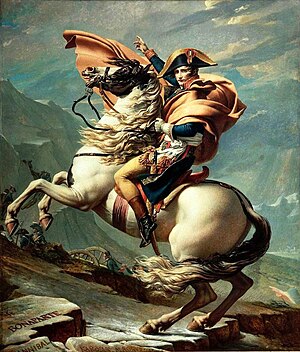 |
| "Blink" by Malcolm Gladwell |
In the second half of my IRB book Blink, author Malcolm Gladwell discusses about the "right-and wrong-way to ask people what they want" and "the delicate art of mind reading." Through his use of expert testimonials and anecdotes, Gladwell is able to effectively convey his theories to his audience.
In the chapter "right-and wrong-ways to ask people what they want," Gladwell utilizes expert testimonials to establish the credibility of his theories. The theory discussed in this particular chapter suggests that, contrary to popular belief, body language can reveal a lot more about a person than asking them directly. He first offers John Gottman as evidence, who found that "we can learn a lot more about what people think by observing their body language or facial expressions or looking at their bookshelves and pictures on the wall." Gladwell then mentions Vic Braden, who found that while people "are very willing and very good at volunteering information...those explanations aren't necessarily correct." Gladwell then goes on to offer his analysis, saying that there is a lot more to people than what you see outside. Finding out about people may seem as easy as asking a few questions and relying on an honest speaker. However, he mentions that many people tend to over dramatize things that observing behavior is a much more accurate way to understanding a person's mind. By having experts to speak on this idea, on top of offering his own explanations, was very effective in proving the feasibility of his theory.
In the chapter "the delicate art of mind reading," Gladwell uses anecdotes to explain his theories and appeal to the audience's emotions. He begins this chapter with an anecdote about a twenty-two year old man from Guinea who lived in South Bronx, working as a peddler in lower Manhattan. Having come to the U.S. just recently, his English was poor and he had a stutter. While enjoying a night out right by his house, a group of plainclothes police officers marked him as suspicious because of two things: His loitering, which made him look like a "lookout for a 'push-in' robber;" and his appearance, which fit that "of a serial rapist who had been active in the neighborhood." So, the four white policemen got out of their cars, chest inflated by their bulletproof vests, and approached Diallo. When he ran away from these men, who looked frighteningly like a gang, he was shot numerous times. The truth about Diallo was discovered shortly. Gladwell believes that "there is almost no other impulse so basic and so automatic and at which we so effortlessly excel." His anecdote shows how important this impulse is in daily life, because for the four policemen, failure of at this most fundamental task cost Diallo his life. "Every waking minute that we are in the presence of someone, we come up with a constant stream of predictions and interferences about what that person is thinking and feeling." We try to read every person we meet, and that is what allows us to see the truth, or at least a glimpse of it.
By using expert testimonials and anecdotes, Malcolm Gladwell is able to convey the complexities of his theories to his audience. He effectively illustrates how body language reveals more about people than conversations, and how making snap judgments is the most fundamental and human impulse. In completing this book, I was able to view the world a bit more differently. Blink is a very good read that I would recommend to everyone.

